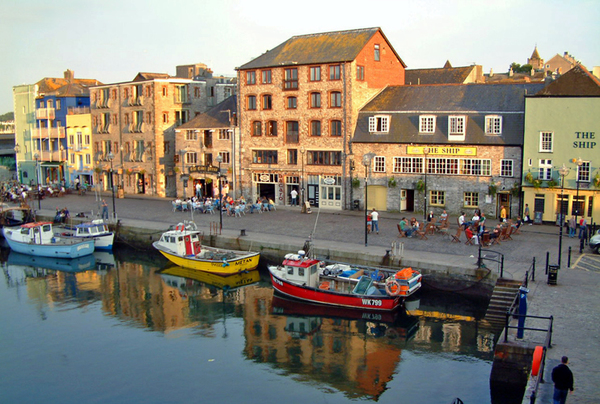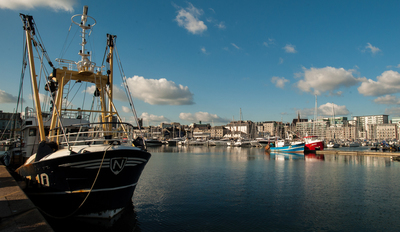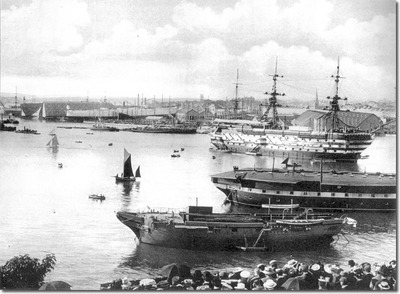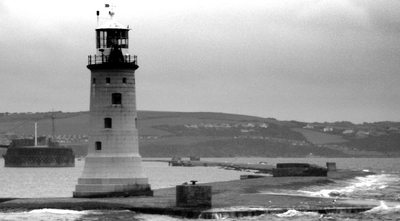
View all banners
FAFB will never call you and ask for your credit card details over the phone. If this happens, hang up!


Known as Britain’s Ocean City, Plymouth, with an annual landing of approximately 11.1 thousand tonnes of fish each year (2014), is the third largest port in the South West of England and 7th in the UK. Situated between 2 sea inlets and benefiting from a large and deep bay the city has long been linked with the sea from which its wealth has grown over the centuries.

Situated in Devon, Plymouth has a long tradition of seafaring from being a small settlement in the Bronze Age to growing as an important port for trading during Roman settlement times. It operated a huge tin trading hub from the Iron Age through to the Medieval period and boasts the largest operational naval base in Western Europe today. It’s strategic importance as a large harbour is cemented across the Atlantic when the second English colony settled in the America’s forming the Plymouth colony. The city continued to grow around the docks throughout the Industrial Revolution and the Plymouth area became synonymous with shipbuilding and exporting as well fishing.
During the civil war in 1642, Plymouth was a firm supporter of the parliamentarians despite much of the rest of the South West of England being Royalists. This juxtaposition of politics forced Plymouth to build defences with forts, palisades and ditches. However, attempts by the Crown to starve the city into submission failed, chiefly, because the citizens had access to such rich fishing waters.
By the Tudor times Plymouth, with its rich stocks, was ‘chiefly dependent on the fish trade’ but was also a major dock for a bustling import and export market. Building on its maritime prosperity and continuing growth a new dockyard was built in Devonport in 1689; a second was added in 1727, a third 1762 and a fourth in 1793. Though the docks increased the city’s ability to trade in imports and exports, fishing remained hugely important to the economy.
Sutton Harbour (or Sutton Pool) was the original site of the docks in Plymouth and the fish markets were located on the quayside of The Barbican Waterfront (home to the largest concentration of cobbled streets in Britain). In 1892 the area developed a purpose built market for the fishing catches and remained the primary place for selling fish until 1995 when a modern replacement was opened on the other side of the harbour.

One of the first freestanding breakwaters built in the UK, the construction at Plymouth was an important feat which enabled the port to offer safer berthing for its naval base. Before the breakwater was completed the southerly gales prevalent in the area could be extremely dangerous. In fact, after the Admiralty made Plymouth its home base in 1690, areas of the Plymouth sound were synonymous with shipwrecks during the winter months and, in 1804, in one day ten ships were wrecked in Deadman’s Bay due to the appalling weather conditions. Though a regular occurrence over the course of its local history this one freak 24 hours proved enough to sway the admiralty into considering measures for the defence of its base. A study completed in 1806 recommended the construction of a breakwater and the structure was started in 1811 by engineers, Whidbay and Rennie. Estimated to require two million tons of stone the project was a massive undertaking and a quarry was opened locally to fulfill the requirement for stones that would build this huge structure.
By 1812 the project had consumed 50,000 tonnes of rock and was already affording some protection to shipping in the area. Storms in 1817 set the whole affair back but by 1841 the breakwater was officially complete. However, with the shifting tides and erosion the project continued to require additional maintenance and, by 1847, had amassed a staggering 3.5 million tonnes of stone. Even today, the structure is regularly added to with some rocks being laid that weigh as much as 100 tonnes each.
Naturally, the breakwater provided the harbours and shipping lanes with good protection but, in itself, offered a new hazard with several merchant vessels becoming wrecked on the newly erected land. A lighthouse was built to help prevent such tragedies but even up to the early twentieth century ships continued to fall foul of the structure.
Plymouth’s breakwater is different to similar structures in that it is a freestanding structure as opposed to an elongated pier forming from the land. This means that it acts as an important ecosystem for fish in the area; a sort of ‘man-made reef’, it attracts vast numbers of lobster, dogfish and small ray. Pollock chase the sand eels in large shoals and, if you want to witness the variety of fish that the sound has to offer, the middle section of the breakwater is thriving with fish.

When the new fish market opened on Sutton Harbour its annual turnover was just £250k but has grown over the last twenty years to become a £19.4 million business and sells over 6000 tonnes of shellfish and fish each year. Up to 30% of the fish that is traded is landed at Plymouth with the remainder arriving by road from other South West fishing ports. The fish market at Plymouth is a regional hub of the fishing industry and operates 24 hours a day, accommodating vessels up to 5.5m in draft across 110m of landing quays.
Plymouth Fisheries generates almost 570 jobs in the local area and contributes as much as £22.6 million per year into the local economy. The industry remains at the heart of the city despite expansion into ferry operations, tourist trade and recreational boating. Plymouth is likely to remain an important hub of fishing for both the UK as well as South West England for some time and, investment in the docks continues to support the future of the industry.